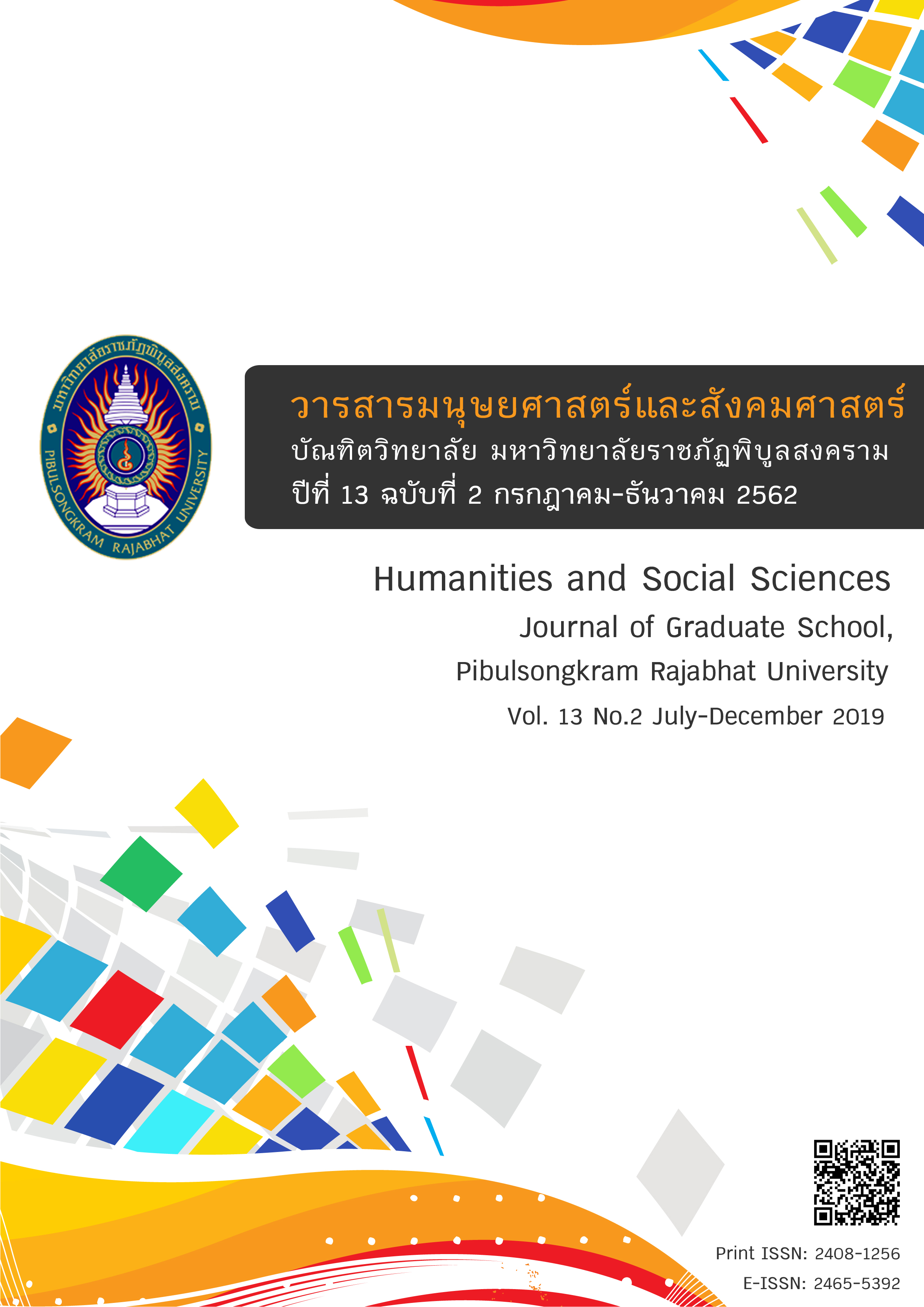Human Resource Transformation and Competitive Advantage: A Case Study of Krungthai Bank
Keywords:
HR transformation, Human resource management and development, Competitive advantage, Organization culture, Service qualityAbstract
The objectives of this research are to examine the context, to determine key success factors and to develop effective model of HR transformation to create Competitive Advantage of Krungthai Bank. The research employs mix method research both quantitative and qualitative. The key Informants for the qualitative research are 20 specialists. The samples of the quantitative research are 400 personnel of Krungthai Bank’s headquarter. The research utilizes qualitative research using in-depth interviews while quantitative research using questionnaires and descriptive statistics and the structural equation model. The findings presented that Krungthai Bank tend to score high of mean value of organization culture, service quality, competitive advantage, human resource management and development, and HR transformation to create competitive advantage. Confirmatory factor analysis of successful factors found that the above factors affected the development of HR transformation to create competitive advantage. In addition, the relationship with structural model, it was expressed HR transformation and competitive advantage between modification indices (MI) employed in this research. This new model related to the information and the hypotheses. After testing of the hypotheses, both direct and indirect effect were found between factors. The results revealed that HR transformation affected the positive side at the competitive advantage level significantly at 0.48. And the competitive advantage affected the positive side from organizational culture significantly at 0.60, service quality at 0.59, and human resource development at 0.58. Furthermore, according to the research, HR transformation and competitive advantage model of Krungthai Bank can be proposed for application.
References
Argyris, C. (1990). Overcoming organizational defenses. Needham, MA: Allyn & Bacon.
Benston, G., & Kaufman, G. (1995). Is the Banking and Payment System Fragile?. Journal of Financial Services Research, 9, 209-240.
Brockbank, W. (2005). The HR Value Proposition. Boston, MA: Harvard Business School Press.
Brockway, S. (2007). The art of business partnering: Making the move from an operational to a strategic role a success. Strategic HR Review, 6(6), 32-45.
Greenberg, J., & Baron, R. A. (2003). Behavior in Organizations. New Jersey: Prentice Hall.
Hawkins, D. I., & Mothersbaugh, D. L. (2010). Consumer behavior: Building marketing strategy. Boston: McGraw-Hill Irwin.
Krungthai Bank. (2016). KTB Transformation. Retrieved January 28, 2016, from http://www.ktb.co.th/ktb/th/about-transformation.aspx
Parasuraman, A., Zeithaml, V. A., & Berry, L. L. (1996). SERVQUAL: A multiple- Item Scale for measuring consumer perceptions of service quality. Journal of Retailing, 64(1), 12-40.
Pascale, R., & Athos, A. (1981). The Art of Japanese Management. London: Penguin Books.
Porter, M. E. (1998). The competitive advantage of nations. New York: Free Press.
Robbins, P. (2009). Organization Theory. New Jersey: Prentice-Hall.
Roongthipanon, O. (2014). Regionalism and ASEAN. Bangkok: The Secretariat of The House of Representatives.
Rothwell, A., & Arnold, J. (2005). How HR professionals rate continuing professional development. Human Resource Management Journal, 15(3), 18-32.
Ulrich, D. (1996). Human resource champions. Boston: Harvard Business School Press.
Ulrich, D., Allen, J., Brockbank, W., Younger, J., & Nyman, M. (2009). HR Transformation: Building Human Resources from the Outside In. New York: McGraw-Hill.
Ulrich, D., Younger, J., Brockbank, W., & Ulrich, M. (2012). HR from the outside in: the next era of human resources transformation. New York: McGraw- Hill.
Downloads
Published
How to Cite
Issue
Section
License
Any articles or comments appearing in the Journal of Humanities and Social Sciences, Rajabhat Phibulsongkram University, are the intellectual property of the authors, and do not necessarily reflect the views of the editorial board. Published articles are copyrighted by the Journal of Humanities and Social Sciences, Rajabhat Phibulsongkram University.









